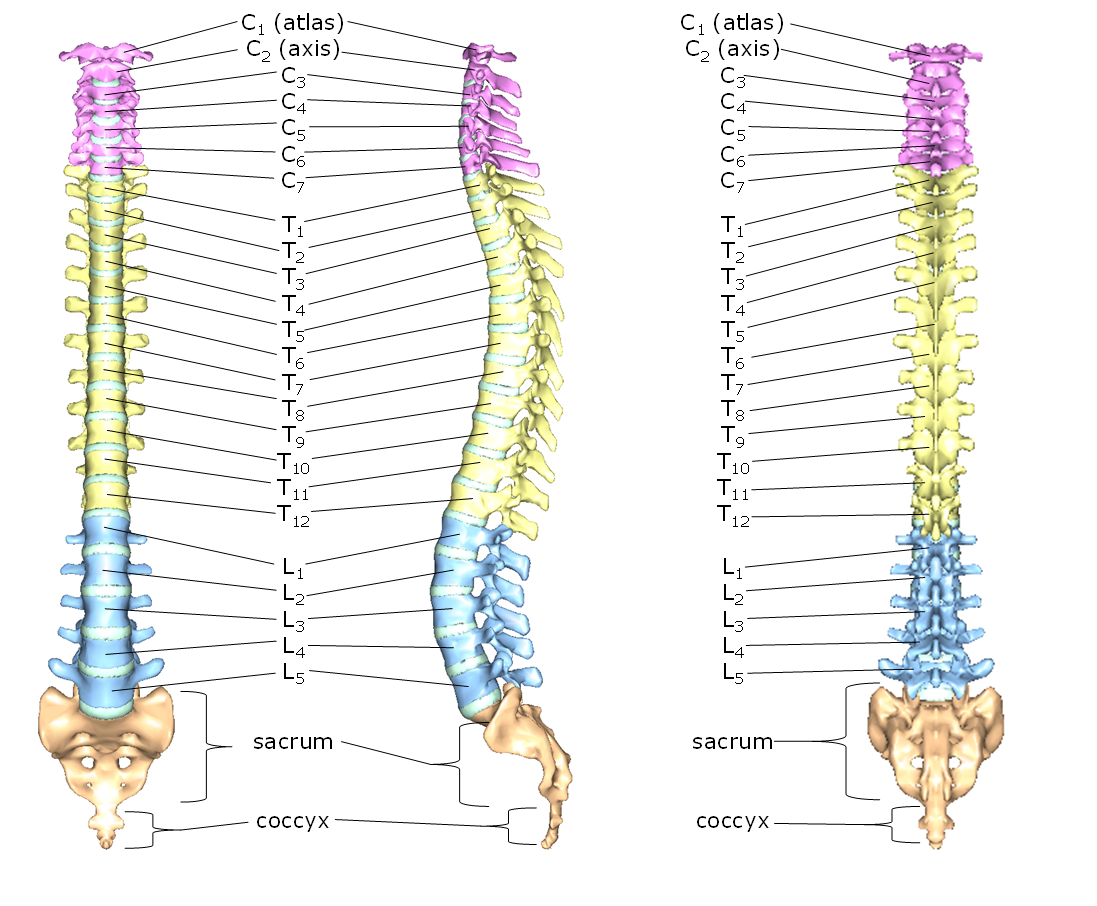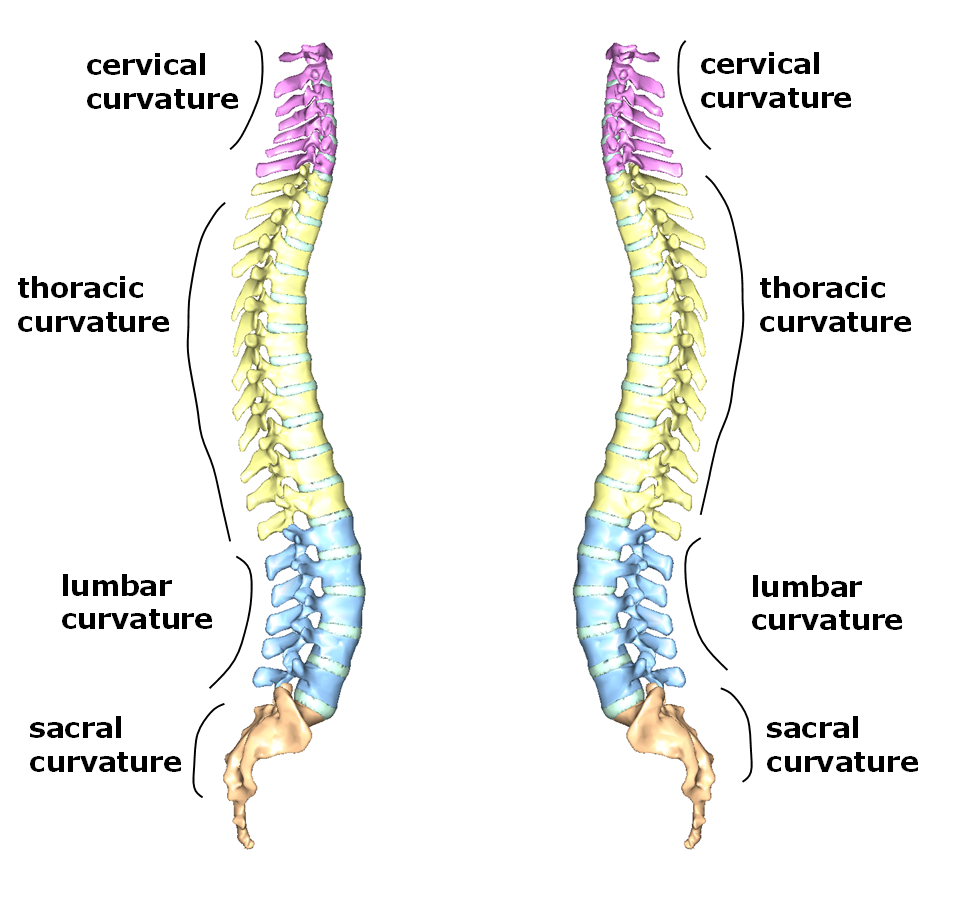8.5.1: Introduction to the Vertebral Column
- Page ID
- 53924
Introduction to the Vertebral Column


Above: Vertebral column. The vertebral column is composed of small, irregularly shaped bones called vertebrae stacked on top of each other. There are seven cervical vertebrae shown in pink (C-vertebrae, numbered C1 through C7), twelve thoracic vertebrae shown in yellow (T-vertebrae, numbered T1 through T12), and five lumbar vertebrae shown in blue (L-vertebrae, numbered L1 through L5). At the base of the vertebral column is the sacrum composed of five vertebrae that have been fused together. Inferior to the sacrum is the coccyx, or tailbone, that is composed of four fused vertebrae. The vertebral column is shown above (top left) in the anterior view, (top middle) in the lateral view of the left side of the column, and (top right) in the posterior view.
The vertebral column is more colloquially called the backbone or the spine. It consists of 24 vertebrae bones, and two bones from the axial section of the pelvic girdle, the sacrum and the coccyx.
The vertebrae are divided into three groups: cervical (neck) vertebrae, thoracic vertebrae (attach to the ribs), and lumbar vertebrae (lower back). There are seven cervical vertebrae (names C1 through C7), twelve thoracic vertebrae (named T1 through T12), and five lumbar vertebrae (named L1 through L5). You can use a meal-related mnemonic to remember them – imagine a crunchy breakfast at 7 am (7 cervical vertebrae), a tasty lunch at 12 noon (12 thoracic vertebrae), and a light dinner at 5 pm (5 lumbar vertebrae).
The vertebral column is not straight. There are four curvatures of the vertebral column, named for the vertebrae that form the curvatures: the cervical curvature, the thoracic curvature, the lumbar curvature, and the sacral curvature. The shapes of the curvatures can be described as being either concave (bending inward) or as convex (bending outward). Both the cervical and lumbar curvatures are concave and the thoracic and sacral curvatures are convex.


Above: The vertebrae are stacked into a column is such a way that there are four curvatures: cervical curvature, thoracic curvature, lumbar curvature, and sacral curvature. (Top left) Lateral view of the right side of the vertebral column. (Top right) Lateral view of the left side of the vertebral column.
Clinical Application: Scoliosis, Kyphosis, and Lordosis
When the vertebral column is positioned in such a way that its curvatures are abnormal, individuals may be diagnosed with scoliosis, kyphosis, or lordosis.

Above: The three abnormal curvatures of the spine are shown above. (A) Scoliosis is an abnormal lateral curvature of the spine. (B) Kyphosis is an exaggerated thoracic curvatire. (D) Lordosis is an exaggerated lumbar curvature.
Attributions (All Vertebral Column Sections)
- "Anatomy 204L: Laboratory Manual (Second Edition)" by Ethan Snow, University of North Dakota is licensed under CC BY-NC 4.0
- "Anatomy and Physiology" by J. Gordon Betts et al., OpenStax is licensed under CC BY 4.0
- "BIOL 250 Human Anatomy Lab Manual SU 19" by Yancy Aquino, Skyline College is licensed under CC BY-NC-SA 4.0
- "BodyParts3D/Anatomography" by The Database Center for Life Science is licensed under CC BY-SA 2.1
- "Cervical vertebra english.png" by user:debivort is licensed under CC BY-SA 3.0
- "Sacrum - animation02.gif" by BodyParts3D is made by DBCLS is licensed under CC BY-SA 2.1


